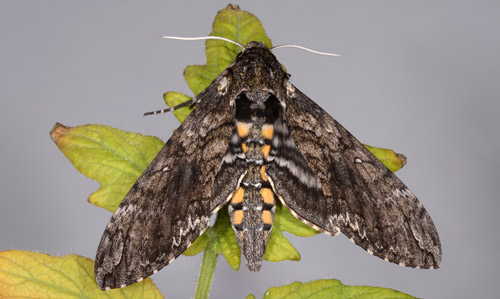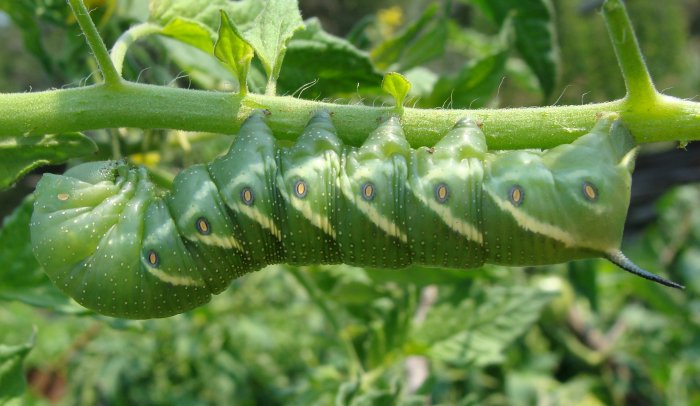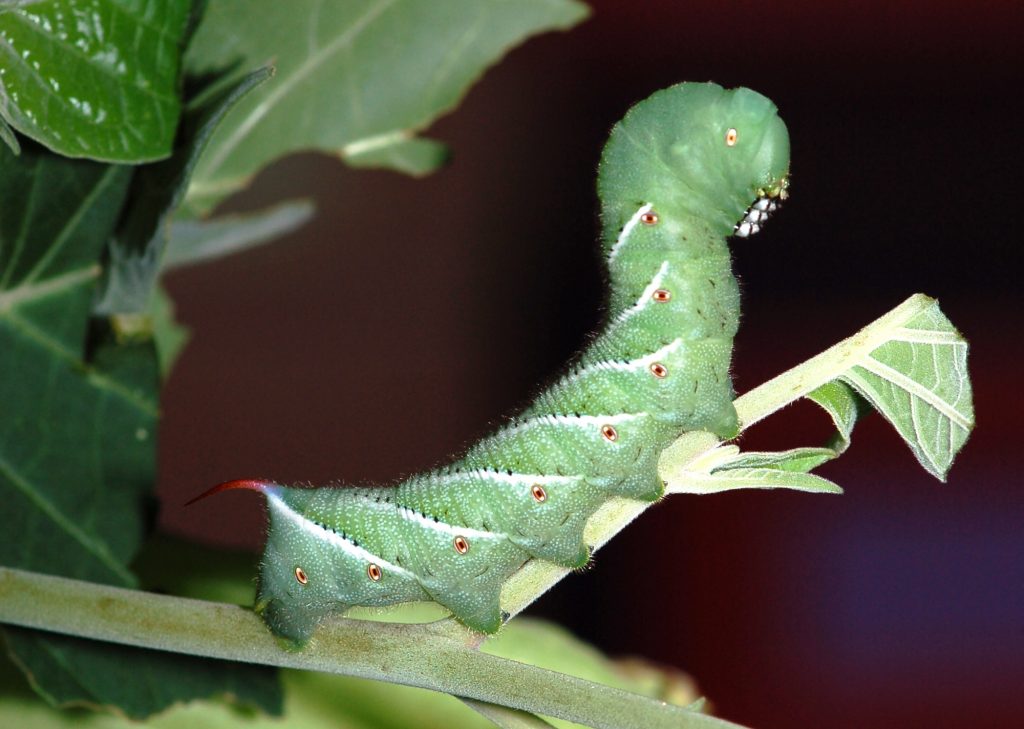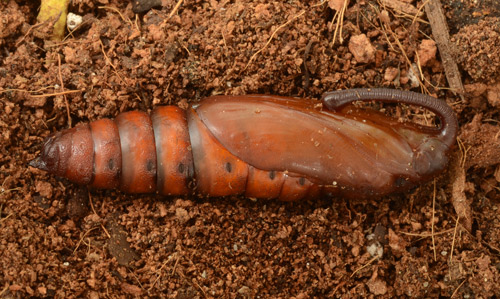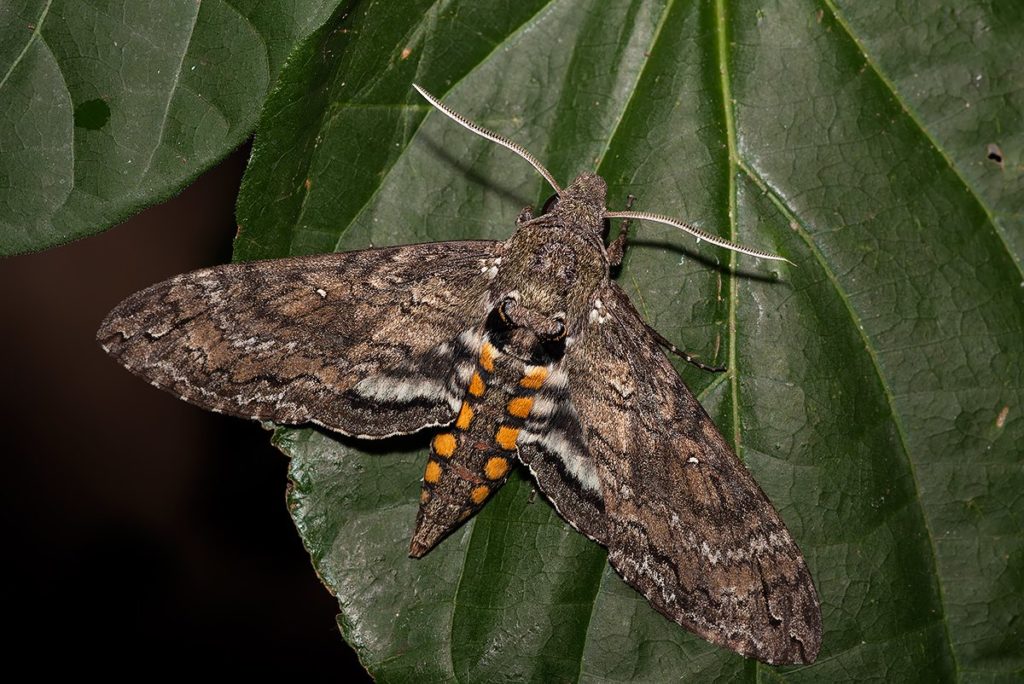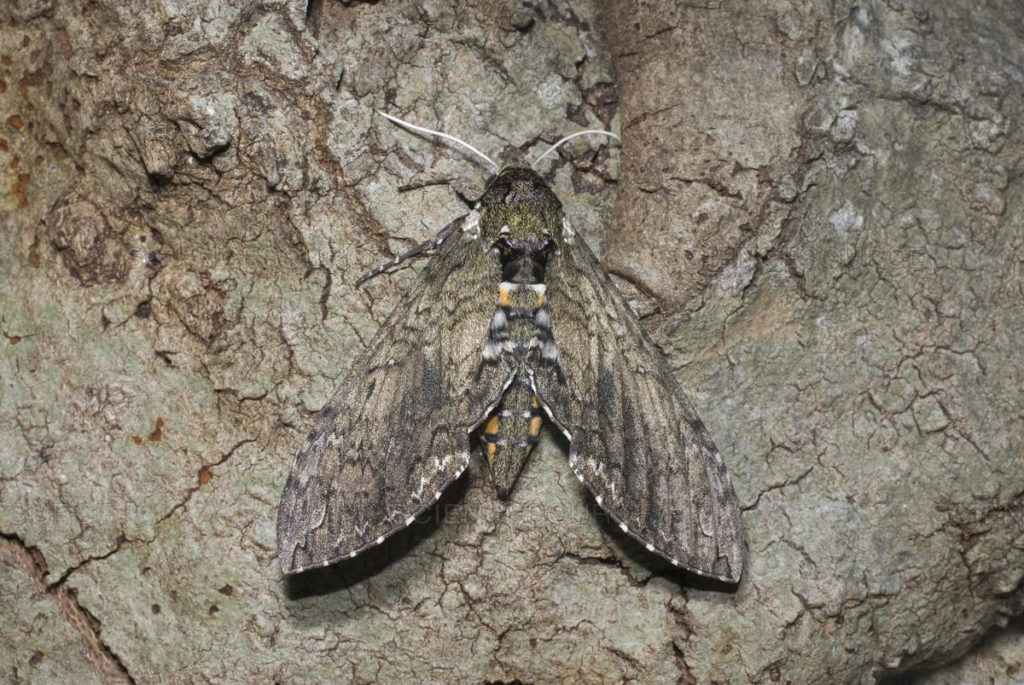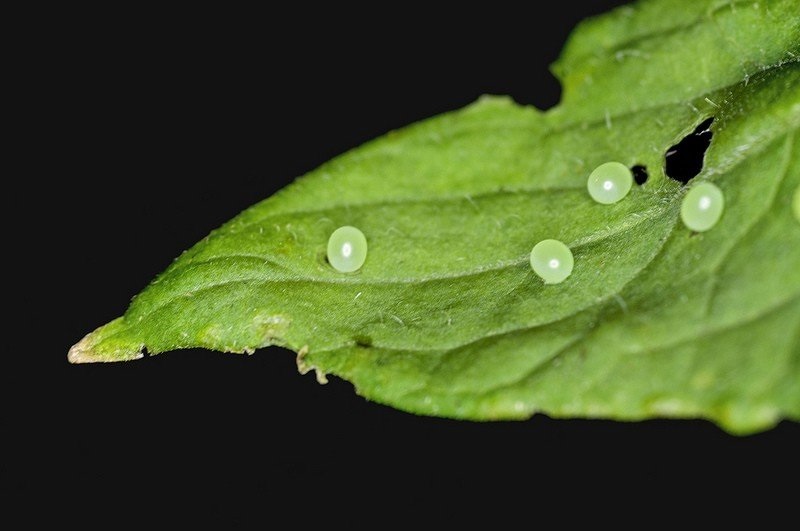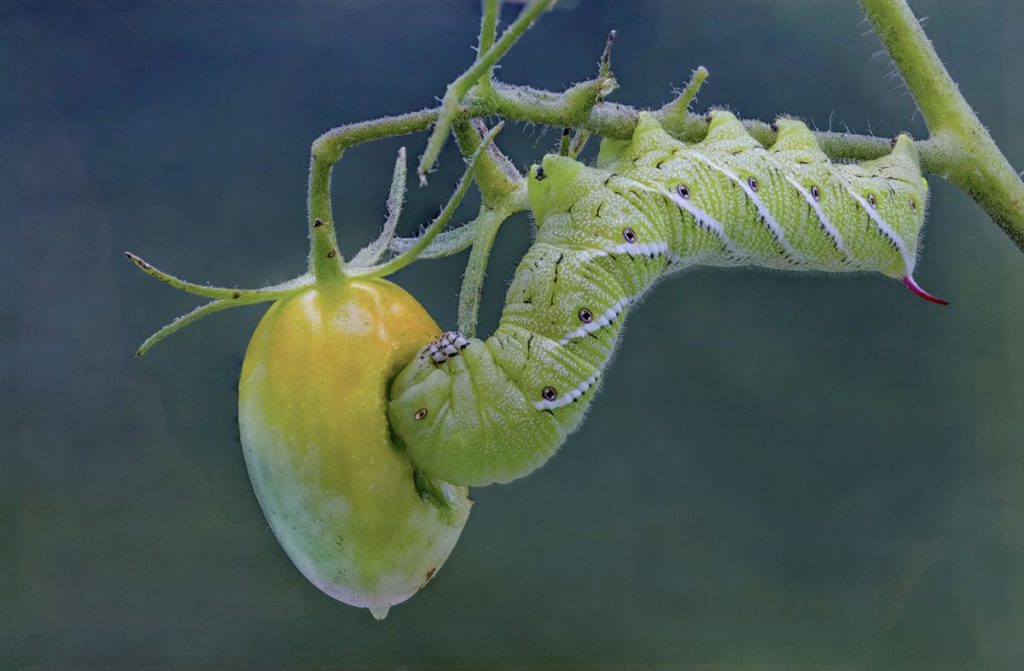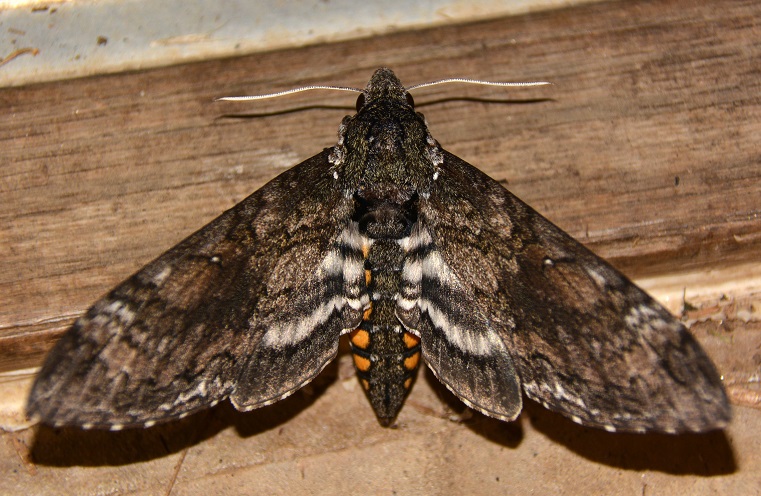Carolina Sphinx Moth/Tobacco Hornworm (Manduca sexta)
The Carolina Sphinx Moth, or tobacco hawk moth, is a part of the Sphingidae family indigenous to different parts of the United States, Central America, and the Caribbean Islands. This species is more popular as tobacco hornworm, a name by which its larva is called.
The tobacco hornworm is often confused with the tomato hornworm, a larva of the five-spotted hawk moth belonging to the same family. Both have visible differences, like the tomato hornworms have white diagonal lines sans the border with black or blue horns. In contrast, the tobacco hornworms have white stripes running diagonally bordered in black alongside red horns.
Scientific Classification
- Family: Sphingidae
- Genus: Manduca
- Scientific Name: Manduca sexta
Description and Identification
Caterpillar
The larvae have a robust green coloration going through about five instars, at the end of which it attains a length of 8 cm. Other prominent features include seven white lines running diagonally, marked with a black border. It lives up to its name since it has a characteristic red horn on its last abdominal segment.
It majorly feeds on the plants belonging to the Solanaceae family, like tomato and tobacco. Upon completing the final instar stage, the larvae display a ‘wandering’ behavior where it goes on to search for a suitable site for pupation. On finding the desired location, it makes burrows underground and pupates there.
Pupa
The pupa appears reddish-brown, also characterized by a prominent maxillary loop encasing its mouthparts and extending backward to about 1/4th its body’s length. The pupal phase lasts for about 18 days. During this phase, the structure of the adult moth develops within the pupal case.
Adult Moth
Sexual Dimorphism: Present
Males have broader antennae than females, alongside claspers towards the end of their abdomen.
Color and Appearance
When opened, the fore and hindwings have a black, brown, or white mottled pattern. The hind wings differ a little because it has light to dark bands arranged alternately in a zigzag pattern. When closed, the wings become triangular, appearing brownish, helping the moths to camouflage well with the surroundings.
Overall, the wings appear narrow, with the hindwings being shorter than the forewings.
Another distinctive feature is the yellowish-orange spots arranged in pairs of six on both sides of the abdomen. In this regard, they have a similarity with the five-spotted hawk moth, the adult of the tomato hornworm. They, too, have these yellowish-orange spots along their abdomen, though in pairs of five.
Average Wingspan: 10 – 12 cm
Flight Pattern: Consistent
Season:April / May – October
Quick Facts
| Other Names | Adult: Tobacco Hawk Moth Larva: Goliath worm |
| Distribution | United States, Caribbean Islands, Central America |
| Habitat | Fields, roadsides, weedy regions, meadows, marshes |
| Predators | Birds, small mammals, wasps |
| Lifespan of Adults | 2 – 3 weeks |
| Host Plants | Tobacco, tomato, and also in plants like potato, pepper, eggplant (though rare) |
| Adult Diet | Nectar of flowering plants |
Did You Know
- Swedish botanist Carl Linnaeus described this species first in his 1763 work Centuria Insectorum.
- The Carolina sphinx moth has seven subspecies, some of which include Manduca sexta caestri, Manduca sexta garapa, and Manduca sexta saliensis.
- The tobacco hornworm (the larva) is known to feed voraciously on the foliage. In this way, they cause immense damage to the foliage by stripping and even defoliating them.
Scientific Classification
- Family: Sphingidae
- Genus: Manduca
- Scientific Name: Manduca sexta

